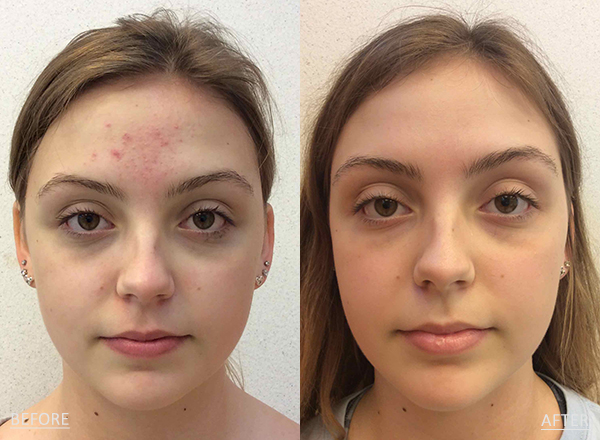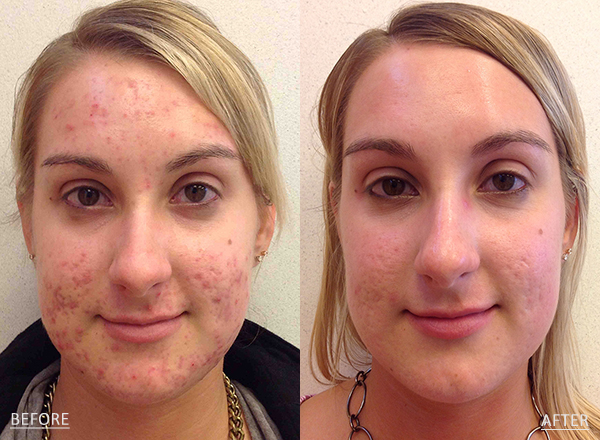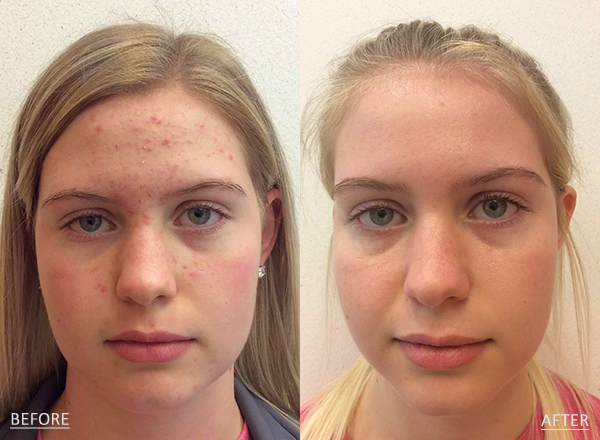Acne is one of the most common skin conditions a teenager can face, but along with it often comes feelings of insecurity about their skin’s appearance. While nearly 85% of teenagers have acne as a normal part of growing up, that doesn’t mean it’s an easy experience
Dr. Joel Schlessinger, a board-certified dermatologist, Mohs surgeon and cosmetic surgeon and our team of physician assistants recognize the complexity of teenage acne. Dr. Schlessinger says, “I’m very results-oriented and take great joy out of being able to help teens and other patients who suffer from acne or sometimes what appears to be acne but is actually an infection masquerading as acne. There are so many times that I see patients who have been everywhere for their acne and we are their last resort; it gives me pleasure to see them back with a clear complexion and no evidence of the acne they had just weeks before. To me, that is the reason I went into dermatology.”
He continues, “Often, we will be the first dermatologist they have seen who really looks at their face and tries to figure out the reason for the acne rather than putting them on the same pills for months on end without any signs of improvement. My staff and I are going to work our best to get to a better place within several months or even sooner.”
To provide insight into this skin condition, we’ll discuss:
· What is teenage acne?
· Our approach to teenage acne at Schlessinger MD
· Teenage acne patient results at Schlessinger MD
What is teenage acne?
Acne is a complex skin condition with various underlying causes, often stemming from multiple factors. Dr. Daniel Schlessinger, board-certified dermatologist as well as Mohs surgeon and cosmetic surgeon elaborates, “Dietary elements such as dairy products and hormone-rich foods, alongside genetic predisposition, ineffective cleansing routines, bacterial infections and a form of ‘yeast acne’ can all contribute to acne. Interestingly, many dermatologists are also seeing more acne due to the increasing pollution in our environment. Sometimes, it’s the culmination of several factors, or a skin condition can appear as acne, but be a different issue altogether.”
Studies on teenage acne and adult acne in women show it often stems from hormonal imbalances during onset of puberty or major life changes like pregnancy or menopause. This period triggers significant fluctuations in estrogen, progesterone and testosterone levels, which can lead to increased oil production in the skin. When this excess oil combines with dead skin cells, it can block pores and result in acne. While not universal, hormonal pimples commonly appear on the lower face, including the chin and jawline, but can occur all over the face as well as the back. Additionally, recurrent breakouts in specific areas, particularly around the time of menstruation, indicate a hormonal component to the acne
For teenagers, types of pimples can present in a couple ways or varying combinations of all three:
· Comedonal acne: This type of acne can appear when pores get blocked with a mixture of sweat, oil, dirt and other debris and form blackheads and whiteheads.
· Inflammatory acne: This type of pimple presents as red, swollen, painful pustules, nodules or cysts that contain bacteria, dead skin cells and excess oil.
· Cystic acne: This is a severe type of inflammatory acne that often presents as pus-filled cysts deep under the skin. These types of pimples are often painful and can be as small as a pea or large as a dime. This form of acne is the worst kind and can often lead to scarring, so it is important to get ahead of it as soon as possible so damage isn’t permanent.
Our approach to teenage acne at Schlessinger MD
When is it time to call in the experts? While there are many over-the-counter treatments you can try at home, navigating the complexity of this skin condition often warrants expert guidance from a dermatologist. Starting your acne treatment under the supervision of a dermatologist is typically the most effective approach. Without expert advice, you might invest time and money in products that fail to target the underlying causes of your acne, potentially leading to permanent scarring from untreated lesions. There is a limited time between when acne becomes a problem and when long-term or forever scarring occurs, so it is important to get in early to see a dermatologist.
At Schlessinger MD, we adopt a comprehensive approach to addressing various forms of acne, ranging from mild to severe cases, including infections and any accumulated acne scarring. Our medical professionals tailor treatment plans to suit your specific needs after assessing your lifestyle factors, past treatments and medical history. Our team will discuss treatment options with you, which may involve a combination of topical and oral antibiotic, retinoid and anti-androgen prescriptions. At times, Dr. Schlessinger may refer you to our Certified Medical Aestheticians in the med spa to incorporate professional treatments like laser treatments, in addition to the recommended personalized at-home skin care.
Our signature at-home acne regimen features a unique dermatologist-developed molecule known as afaLUXE™. Dr. Joel Schlessinger explains, “We developed this innovative ingredient complex to provide effective exfoliation and eliminate pore-clogging debris while maintaining optimal moisture levels. This is particularly beneficial as it prevents the common issue of dryness associated with more traditional acne medications.” Here is a closer look at our LovelySkin LUXE acne regimen:
LovelySkin LUXE Clarifying Gel Cleanser: What makes this cleanser great for acne is in addition to the 2% glycolic acid and 2% salicylic acid, it’s also formulated with 3% afaLUXE. This unique antioxidant molecule improves cellular turnover and exfoliation but also works in synergy with the skin’s moisture barrier. This ensures virtually no irritation, making it an ideal cleanser for oily and acne-prone skin. You can also use this cleanser to purify acne-infected skin on the back.
LovelySkin LUXE Dual Action Toner Pads: These toner pads are a great follow-up to the cleanser as they combine 5% glycolic acid and 5% salicylic acid in a pre-soaked, easy-to-use pad that swipes easily over any part of the body.
LovelySkin LUXE Acne Care Gel 9%: This gel is gentle yet effective at not only eliminating different types of pimples but also helping to prevent them from occurring in the first place. 9% afaLUXE™ provides effective exfoliation while helping to balance and support skin’s protective barrier. Unlike a spot treatment, this gel is designed to be applied all over the face to treat and prevent acne.
LovelySkin LUXE Mattifying Antioxidant Moisturizer: Contrary to popular belief, acne-prone and oily skin types do need a moisturizer. If skin is left to dry out, it will overcompensate and produce even more oil, which will only intensify your acne. We recommend this product for our acne patients because it helps exfoliate with afaLUXE™, protects against pollution with antioxidants and leaves skin with a soft, matte finish. It’s also suitable for use in conjunction with Accutane, a common prescription for severe acne.
Teenage acne patient results at Schlessinger MD
Seeing is believing! At Schlessinger MD, our integrated approach has helped to improve acne in many teenage patients. Here are a few before and after photos:
If you’re ready to get started on your teenage acne treatment, you can book an appointment with Dr. Schlessinger or one of our physician assistants online. During your in-office visit, our team will discuss your concerns, answer any questions you may have and develop a treatment plan. If you’d like to speak to us directly, you can call us at 402-334-7546.



